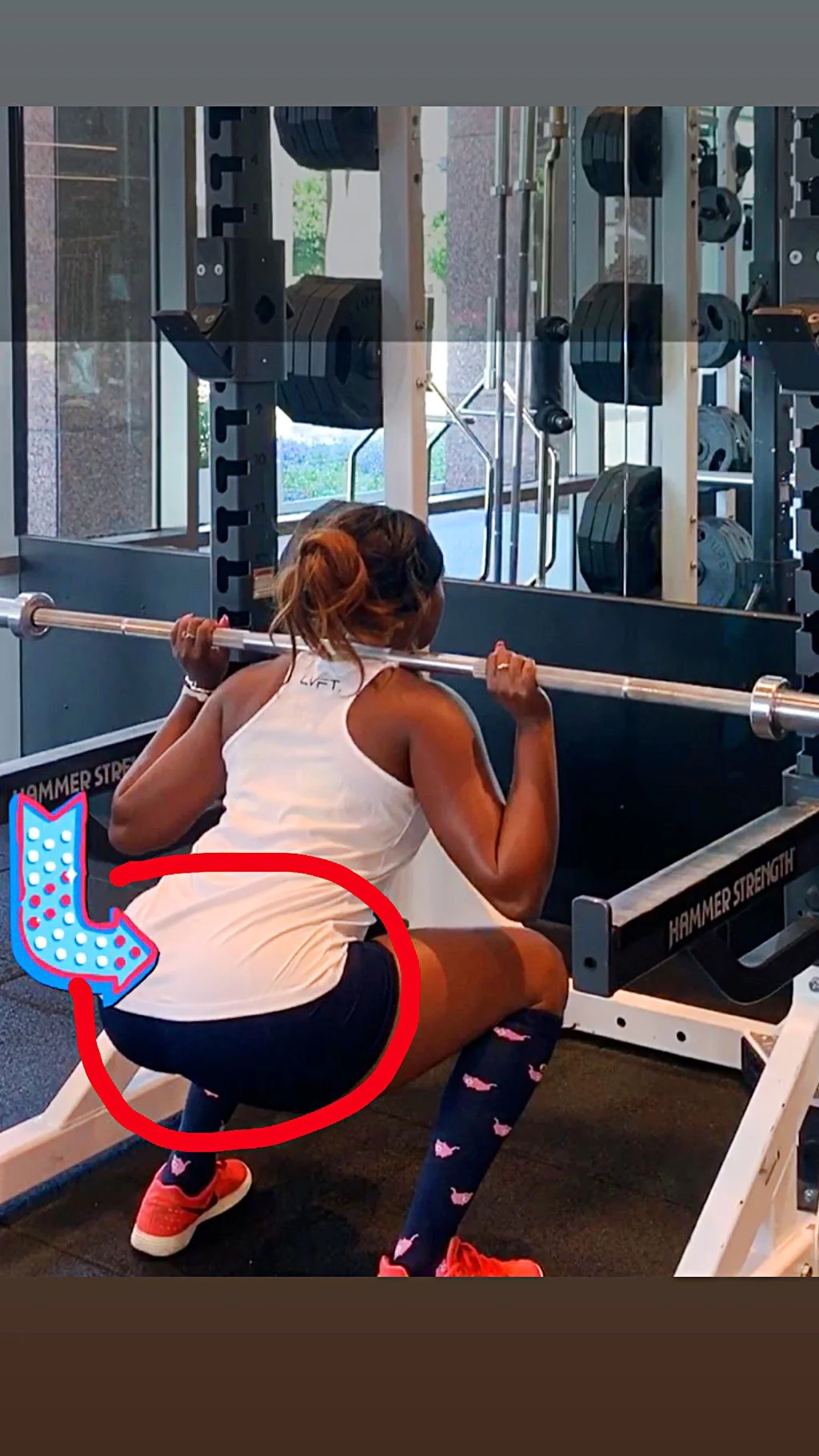What Is the Best Squat Form?
A question that I get asked often while at the gym, is “is my squat form correct?”Let me provide you with some scientifically backed facts that will provide some clarity on the subject. I will give you the basic overview of what I learned at a Squats & Deadlifts seminar, but will provide references to the science at the bottom of this post. Sound good? Great, then keep reading!
The key to finding out your proper loaded squat form, is in your anatomical structure. Essentially, you are genetically predisposed to be able to weight bear while squatting or not. Not everyone is designed to perform a loaded squat, despite what fitness magazines or social media says. Now, keep in mind that I am speaking only about weighted squats. You can squat however you’d like if you’re doing a body weight squat.
The two major factors that you want to consider are your spine and your hips. Some people have a flexible spine. Examples of these people are gymnasts and advanced yogis. Their spines typically have an amazing ability to bend outside of an average range. This contributes to them being exceptional at certain body weight movements, but not ideal for heavy squats. Adding an external force to a flexed spine, can cause injury. We want to avoid this. This is the case when people experience a spinal deviation commonly referred to as a “butt wink” while squatting. A butt wink is the point where your tailbone dips under. Specifically, it’s where L5 & S1 start to bend and increase distance between one another. Under load, this butt wink can lead to injury. See video below to see what a butt wink looks like. You’ll see that at a certain depth, my butt dips under. That’s an indication that I’m squatting too low for my spine to support the load. If you experience a butt wink at a certain depth, than you should also avoid squatting with load to the depth that the butt wink occurs.
The other type of spine is a rigid spine. Power lifters or football players are good examples of people who have rigid spines. Their spines are better adapted to bearing heavy loads and are therefore better suited for squatting with weights They are less likely to experience a butt wink a lower depths which minimizes their risk for lower back injury.
Now let’s talk about your hips. The way your femur (upper leg bone) fits into your pelvic bone, also determines the depth of your squat. Some people have femurs that sit far into the joint, allowing them to squat down deeply without discomfort. Other people have femurs that sit in the joint much more shallow, which means they can’t squat down as low without discomfort. These people may describe the feeling as being stuck at the bottom and unable to get lower (like myself). Another factor, is the shape that the hip joint creates. Based on the shape, some people can get more depth in their squat by turning their feet out slightly. Additionally, some hip have hips that are wide and some have narrow hips. This size can determine if someone feels more comfortable squatting wider (sumo stance) or more narrow. Some people are able to get more depth by adjusting the width of their feet. So you see, there is no one cookie cutter way to stand while squatting. You don’t have to squat with your feet shoulder with apart and toes facing forward. It’s a good “standard” place to start, but based on your unique body structure you may need to make some adjustments. Same with the depth of your squat. Squatting just below parallel is a common practice, but based on your hips you may not be able to get that low comfortably.
You may need to play around a bit with your squat to determine the ideal foot position and depth for your body. A quicker way to determine your optimal squatting position is to have a qualified fitness professional perform a Hip Scour Test and a Rock Test on you. These two tests can help to determine your ideal squat position.
Now what about if you’re trying to build a booty or increase the overall mass of your legs. Don’t you have to squat “ass to grass” or bellow patellar to make this happen? The answer is no! EMG testing of the muscles of the leg concluded that increased depth does not cause greater muscle contraction or more muscle fibers to contract relative to a more shallow squat position. In other words, there isn’t evidence to support that going lower helps you gain more muscle. The only people who need to be concerned with the depth are those who compete in power lifting or another sport where a certain squat depth is required to prove a level of athleticism. These are special cases. If you are an average person who has no plans of competing, the risk of loading your spine to that depth is not worth gains. There are other exercises besides the squat that can help you gain muscle without compromising your spine if you don’t have the ideal body structure for loaded squats.
After reading this, I hope that you now understand that there is not one perfect way to squat. Everyone’s squat is going to vary based on their own anatomical structure. Find the way the feels most comfortable and safe for you.
References:
I acquired this information from attending a seminar lead by Joel Proskewitz who works closely on research with Dr. Stu McGill. Find out more about their research by clicking here.

